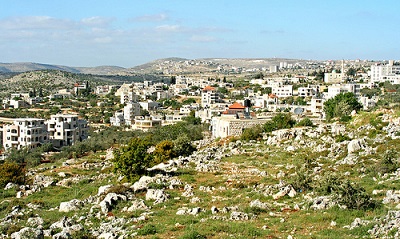Rare are the places which combine beauty, civilization, and development! … How if a place is home of man since the Stone Age, and is the first agricultural village in the world, and owns elements which could change it into an incomparable tourist, industrial, cultural and religious attraction?
History & civilization
Yabroud’s civilization is considered one of the most distinguished among Eastern civilizations because continuous researches asserted that it was inhabited between 154, 000-100, 000 year ago.
Most astonishing is that this discovery
A German archaeologist, Alfred Roust who, by accident, discovered three caves in Iskafta Valley which revealed the fact that the Stone Age man settled this area. Roust, possessed with archaeology, came to the East in 1930 looking for information about the first home of man. He arrived in Syria on a bicycle from Anatolia but for his good fortune he fell ill and was obliged to spend some days in the Danish Hospital in Al Nabk, a city in the region of Qalamoun in Central Syria. There, one of the medicines told him about Yabroud, and as soon as he recovered he went to it where he discovered the first evidence of prehistory man and his first home.
Roust documented his discoveries in a book titled “Discovery of Yabroud Caves” which was received with great interest by his colleagues. Later, Columbia University (CU) sent a team to complete Rust’s mission in Iskafta Valley for three consecutive excavation seasons which ended in 1965. The CU team discovered two more caves and found in the first one rare foot prints of Pre- Neanderthal Man, and the oldest fire- place where they estimated the age of its ashes by 40,000 year.
These discoveries allured a Japanese mission to visit Yabroud in the summer of 1967 and 1968 when Suzuki and Koboury carried out several researches and explorations in Mashkouna Valley and Haria, both are near Iskafta, and found new caves once were inhabited by Stone Age man.
Studies and researches proved that Yabroud’s civilization is the outcome of the development of Yabroud man who knew farming and domesticated animals. A French researcher said the first agricultural village in the world was found in Yabroud. (Kuwait Magazine – Issue 152). Settlement continued in Yabroud until late historical periods where archaeologists discovered some graves in Khabiat Rashida and concluded that there was a Canaanite princedom in the region in the early years of the second Millennium BC. The region witnessed also the rise of an Aramaic kingdom where a huge temple of the God of the Sun was found and later was changed by the Romans into Jupiter’s Temple. This same temple was changed during the Byzantine period into a cathedral known today as the cathedral of Saints Constantine & Helen, and is considered a real artistic work of art.
The history of Yabroud allures you to go deep into its chapters which astonishes us today and leaves us sink deep in the details of past ages which were revealed by the discoveries of the Germans, the Americans and the Japanese. And the question now is what has the Syrians done to the land they own, and to the civilization of their ancestors?
Yabroud… Summer Resort of Zenoubia in the forties of the past century Yabroud was one of the most famous summer resorts in Syria, but it lost its cluster because tourists turned to Zabadani, Saidnaya and Maaloula.
Haifaa Mafalani

